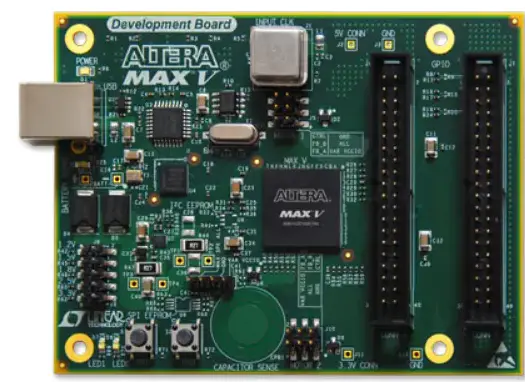ចម្លើយ

ថ្ងៃទី 28 ខែកញ្ញា ឆ្នាំ 2025 - ម៉ោង 09:41 ព្រឹក
To interface a CompactFlash+ (CF+) card using Altera MAX series devices, follow these key steps and understand the signals involved:
1. **Interface Initialization:**
- The CF+ card interface is enabled by asserting the H_ENABLE signal.
- When the CF+ card is inserted, CD_1 pins go low, indicating proper insertion, triggering an interrupt signal H_INT.
2. **Data Transfer Readiness:**
- H_READY signal is asserted when the interface is ready to accept data from the processor.
- The host responds to an interrupt by generating an acknowledgment signal, H_ACK.
3. **Reset and Control Signals:**
- H_RESET signal, generated by the host, indicates the need for a reset.
- H_CONTROL signal from the host specifies desired CF+ card functions to the interface.
4. **Data Bus and Operations:**
- Data is available on the 16-bit data bus after control signals are issued.
- Operations are synchronized to the H_ACK signal, with specific signals like HOST_ADDRESS, CE_1, OE, WE, REG_1, and RESET being issued.
5. **Memory and I/O Modes:**
- H_IOM signal distinguishes between common memory and I/O mode.
- In I/O mode, byte and word access operations are executed similarly to memory mode.
6. **Key Interface Signals:**
- Host Interface Signals: H_INT, H_READY, H_ENABLE, H_ACK, H_CONTROL, H_RESET, H_IOM.
- CF+ Interface Signals: HOST_ADDRESS, CE_1, IORD, IOWA, OE, READY, IRAQ, REG_1, WE, RESET, CD_1.
7. **Implementation:**
- Designs can be implemented using Altera MAX II, MAX V, and MAX 10 devices.
- Design source codes are compiled and programmed directly to the MAX devices.
By following these steps and understanding the key signals involved in the CF+ card interface using Altera MAX series devices, you can effectively communicate with and utilize the capabilities of the CF+ card in your applications.
 សៀវភៅណែនាំអ្នកប្រើប្រាស់ សំណួរ និងចម្លើយ
សៀវភៅណែនាំអ្នកប្រើប្រាស់ សំណួរ និងចម្លើយ






បន្ថែមមតិយោបល់ថ្មី។